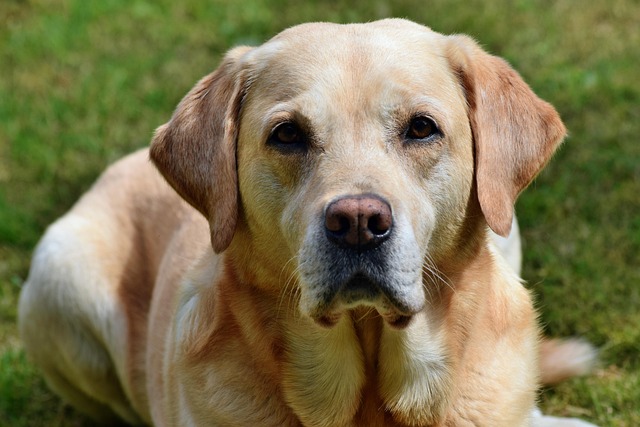
How can I tell if my dog's heatstroke is serious
Let’s be real: It’s a sticky August morning in Los Angeles, and you took your 2-year-old Golden Retriever, Max, for a walk a little later than usual
If you’re a new dog parent in the US—maybe you’re sitting on your Colorado apartment floor, staring at your 8-month-old Golden Retriever, Lila, whose once-fluffy tail now has a tight knot you can’t pull apart, or you’ve spent 20 minutes untangling your rescue Shih Tzu’s fur after a walk in the park—you’ve probably wondered: How often do I really need to brush her? Am I doing this too much… or not enough? Brushing a long-haired dog isn’t just about keeping them looking cute—it’s about their comfort and health. The answer depends on their breed, season, and lifestyle, but with a simple routine, you can avoid mats and keep their coat happy. Let’s break this down with real tips.
First, let’s keep the science straightforward: Long-haired dogs (think Huskies, Poodles, or Collies) have either double coats (a thick undercoat plus a longer topcoat) or single coats (soft, flowing fur like Shih Tzus). Double coats shed seasonally (spring and fall) to adapt to temperature changes, while single coats grow continuously. Both types trap dirt, grass, and even tiny burrs from walks—if you don’t brush regularly, these get tangled into mats. Mats pull on their skin, causing pain, redness, or even skin infections (your dog might lick or scratch the area nonstop to soothe it). Take Mia, a first-time owner in California: She only brushed her 1-year-old Shetland Sheepdog, Cooper, once a week. After a month, he had a mat behind his ear so tight her vet had to cut it out—Cooper yelped the whole time, and Mia felt terrible. Now she brushes him twice a week, and no more mats.

Here’s how often (and how) to brush your long-haired dog, step by step: Start with frequency: For most long-haired breeds, 1–2 times a week works for everyday upkeep. During shed seasons (spring when they lose winter coats, fall when they grow them back), bump it to every day—this stops loose fur from turning into mats and keeps your apartment from being covered in hair. For puppies under 6 months, brush 2–3 times a week to get them used to the routine—start with 5-minute sessions, so they don’t get bored. Use the right tools: A pin brush for detangling and a slicker brush for double coats (it gets through the undercoat). When brushing, start from their head and work back to their tail, going in the direction their fur grows. If you hit a mat, don’t yank—hold the fur above the mat (so you don’t pull their skin) and gently tease it apart with your fingers first. Reward them with a freeze-dried salmon treat after each session; positive reinforcement makes them look forward to brushing (never scold them for wiggling—punishment goes against US animal welfare norms and will make them fear it).
Now, let’s tie in rules and habits that matter. Every US state requires core vaccines (distemper, parvovirus)—regular vet visits (mandatory for shot updates) are a great time to ask your vet about brushing frequency (they’ll know your dog’s breed specifics). Skipping vet checks could mean missing skin issues from unbrushed fur, and in states like New York or Florida, neglecting your dog’s comfort (like leaving painful mats) might lead to welfare checks. When you walk your dog (even after brushing), always clean up their poop—cities from Seattle to Boston fine up to $300 for leaving waste, and dirt from poop can get stuck in their fur and cause mats. If you live in an apartment, brush your dog on a waterproof mat (to catch loose fur) during quiet hours (weekday afternoons, not late nights)—flying fur can bother neighbors with allergies, and loud brushing (like yanking a mat) might disturb them.
Brushing a long-haired dog takes a little time, but it’s worth it to keep them comfortable. With the right frequency, gentle tools, and positive vibes, you’ll turn brushing into a bonding moment—no more tangled tails or stressed pups. Before you know it, Lila will be leaning into the brush, waiting for her post-brush treat.

Let’s be real: It’s a sticky August morning in Los Angeles, and you took your 2-year-old Golden Retriever, Max, for a walk a little later than usual

You're enjoying a summer afternoon at the park when you notice your dog has stopped panting and appears disoriented - their gums are bright red

Let’s paint the picture: You’re in your Denver apartment, watching your 4-year-old Boston Terrier, Ruby, plop down mid-play session with her favorite toy

Many dog owners notice their pets nails seem shorter after regular walks,but how much does this daily activity actually help?The answer depends on where you walk—concrete sidewalks or asphalt streets gently file nails as a dog's paws hit the ground

Most dog owners notice their pup scooting across the carpet at some point, but few connect it to impacted anal glands. These small sacs near a dog’s rectum secrete a scent for marking territory

Most vets agree that regular dog teeth cleaning is key to avoiding painful dental issues later. For healthy adult dogs, a professional cleaning at the vet’s office every 12 to 18 months usually works well.